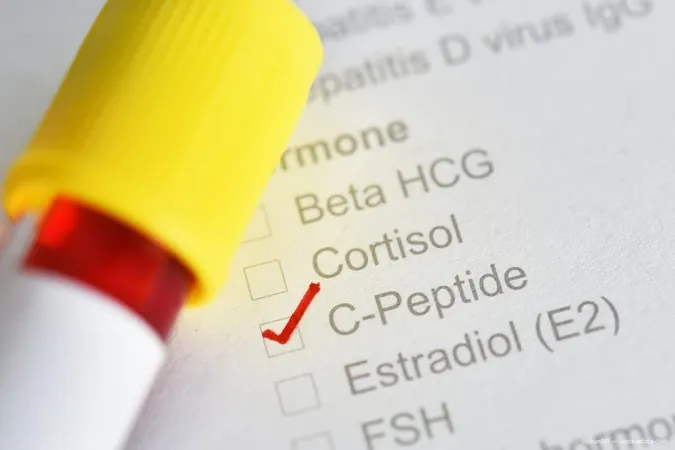
Unlocking the Mystery: Fasting C-Peptide Levels and Their Surprising Impact on Diabetic Retinopathy
2025-04-09
Author: Wei Ling
Fasting C-Peptide: A Double-Edged Sword in Diabetes?
Recent groundbreaking research from a team at The Second Hospital of Jilin University in China has unveiled a complex relationship between fasting C-peptide (FCP) levels and diabetic retinopathy (DR) in patients battling type 2 diabetes. Lead researcher Dr. Jicai Ma and his colleagues report that there's a protective effect of FCP below a certain threshold—but things get tricky once that level is crossed.
The Study: What the Numbers Reveal
In their comprehensive study involving 1,661 patients, the researchers discovered a nonlinear relationship between FCP levels and DR risk. Specifically, they identified a critical threshold at 4.11 ng/mL: below this level, every increase of 1 ng/mL in FCP correlated with a staggering 24% reduction in DR risk. However, above this line, the connection becomes murky, suggesting a possible increase in DR risk without statistical significance.
C-Peptide: The Insulin Secretion Marker You Need to Know About
C-peptide is released alongside insulin and serves as a reliable indicator of insulin secretion and β-cell health. Dr. Ma's findings highlight that fluctuations in FCP concentrations don't just reflect waning β-cell function; they can also signal insulin resistance, complicating the clinical picture for patients with type 2 diabetes.
The Mechanisms Behind the Numbers
The researchers explored how C-peptide might exert both protective and detrimental effects contributing to DR. On the one hand, it may shield retinal health by limiting oxidative stress, stabilizing endothelial cells, and curtailing harmful increases in microvascular permeability. On the flip side, heightened levels of C-peptide could unleash potential harm in individuals with type 2 diabetes.
What It Means for Patients
The study's implications are significant: The protective properties of C-peptide seem to diminish once levels surpass 4.11 ng/mL, suggesting that there exists a balancing act where too much C-peptide can be detrimental. This complex dance of protective and harmful effects highlights the need for further research to better understand how optimizing C-peptide levels may influence the risk of diabetic complications such as retinopathy.
Final Thoughts: A Call for More Research
As diabetes management continues to evolve, these findings illuminate the intricate and often paradoxical roles of biomarkers like C-peptide. This study not only sheds light on the need for more thorough investigations into the dose-response relationship between FCP and DR but also opens the door for new therapeutic strategies aimed at moderating C-peptide levels to safeguard against diabetic complications.




 Brasil (PT)
Brasil (PT)
 Canada (EN)
Canada (EN)
 Chile (ES)
Chile (ES)
 Česko (CS)
Česko (CS)
 대한민국 (KO)
대한민국 (KO)
 España (ES)
España (ES)
 France (FR)
France (FR)
 Hong Kong (EN)
Hong Kong (EN)
 Italia (IT)
Italia (IT)
 日本 (JA)
日本 (JA)
 Magyarország (HU)
Magyarország (HU)
 Norge (NO)
Norge (NO)
 Polska (PL)
Polska (PL)
 Schweiz (DE)
Schweiz (DE)
 Singapore (EN)
Singapore (EN)
 Sverige (SV)
Sverige (SV)
 Suomi (FI)
Suomi (FI)
 Türkiye (TR)
Türkiye (TR)
 الإمارات العربية المتحدة (AR)
الإمارات العربية المتحدة (AR)